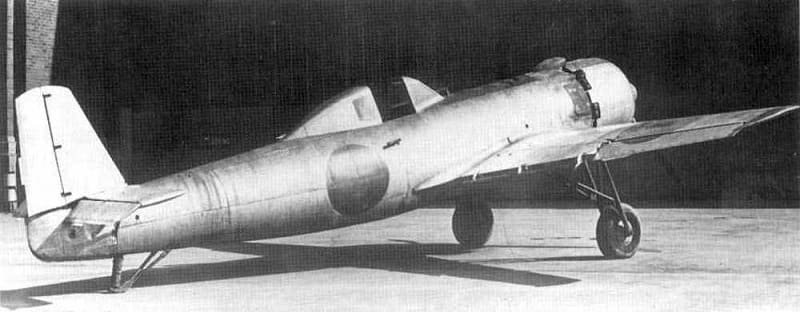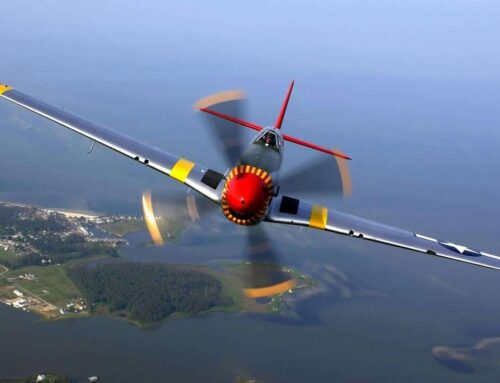Are you searching for a unique and memorable way to impress the aviation enthusiast in your life? Look no further than ModelWorks Direct’s personalized Nakajima Ki-115 Tsurugi wooden model. This museum-quality model is crafted with expert precision and handcrafted using only the finest materials, capturing the Nakajima Ki-115 Tsurugi sleek design in stunning detail. You can even customize it with a unique paint job, tail number, and other features to make it truly one-of-a-kind. To showcase this exceptional piece, ModelWorks Direct offers a variety of stands and cases that will highlight its beauty and craftsmanship. Give the gift of aviation history with this remarkable Ki-115 wooden model from ModelWorks Direct.
The Nakajima Ki-115 Tsurugi was a Japanese dive bomber aircraft developed during World War II. The plane, named after the Tsurugi mountain in Japan, was a highly effective and deadly weapon used by the Japanese army against Allied forces in the Pacific theater. In this article, we will delve into the history of the Nakajima Ki-115 Tsurugi and explore its impact on aviation technology.
History
The Nakajima Ki-115 Tsurugi was developed in response to Japan’s dire situation during World War II. By the end of 1944, Japan’s naval and air forces were struggling to keep up with the United States, which had a significant technological and industrial advantage. In an attempt to turn the tide of the war, Japan began developing suicide weapons that could be used in kamikaze attacks against American ships.
The Nakajima Ki-115 Tsurugi was one of these weapons. The aircraft was designed to be a cheap and easy-to-build dive bomber that could be flown by inexperienced pilots. It was made primarily of wood and had no armor or self-sealing fuel tanks, making it highly vulnerable to enemy fire. However, the aircraft was also equipped with a large bomb that could cause significant damage to enemy ships.
Development of the Nakajima Ki-115 Tsurugi
The Nakajima Ki-115 Tsurugi was developed in 1944 in response to the need for a specialized aircraft that could be used for kamikaze attacks. The Japanese military was facing a desperate situation, with its air force depleted and its pilots lacking in experience. In order to counter this, the decision was made to use aircraft as flying bombs.
The Nakajima Ki-115 Tsurugi was designed to be a one-way mission aircraft, capable of carrying a 1,764-pound bomb that could be released just before impact. The plane was made mostly of wood and had a unique reverse tapered wing design that gave it stability during dives. It was powered by a 1,500 horsepower Nakajima Homare engine, which gave it a top speed of 329 mph.
Combat Use of the Nakajima Ki-115 Tsurugi
The Nakajima Ki-115 Tsurugi made its combat debut in the latter stages of World War II, with the first kamikaze mission taking place on April 6, 1945. The plane was primarily used in attacks against Allied shipping, including aircraft carriers and battleships. The aircraft was successful in its missions, causing significant damage to enemy vessels and often resulting in the loss of the aircraft and its pilot.
The Nakajima Ki-115 Tsurugi was also used in ground attack missions, with some modified versions being equipped with guns and rockets. These planes were used to attack enemy airfields and other strategic targets, providing a valuable asset to the Japanese military.
Ki-115 Tsurugi Design
The Nakajima Ki-115 Tsurugi had a unique design that was specifically tailored to kamikaze attacks. It had a fixed undercarriage and no flaps, making it simple and easy to operate. The aircraft was also equipped with a large bomb that could be dropped at a steep angle, allowing it to penetrate the decks of enemy ships.
Despite its simple design, the Nakajima Ki-115 Tsurugi was still a difficult aircraft to fly. It was underpowered and had a tendency to stall, making it difficult for inexperienced pilots to control. However, the aircraft’s simplicity also made it easy to produce, and Japan was able to build hundreds of them in a short period of time.
Legacy of the Nakajima Ki-115 Tsurugi
Despite its effectiveness as a kamikaze plane, the Nakajima Ki-115 Tsurugi did not have a significant impact on aviation technology. The plane was developed quickly and with limited resources, and its primary purpose was to serve as a weapon rather than an example of cutting-edge aircraft design.
However, the Nakajima Ki-115 Tsurugi remains an important symbol of Japan’s wartime history and the sacrifices made by its pilots. The aircraft has been the subject of numerous scale model kits and has been featured in many films and video games.
The Nakajima Ki-115 Tsurugi was a symbol of Japan’s desperation during World War II. It was a weapon born out of a sense of hopelessness and a desire for revenge. However, it was also a testament to the ingenuity and determination of the Japanese people. Despite facing overwhelming odds, they were able to produce a deadly weapon in a short period of time.
The plane also serves as a reminder of the devastating impact of war and the human toll it takes. The use of kamikaze planes during World War II is a testament to the extreme measures that nations will take to achieve their goals and the bravery of those who fought for their country.
Ki-115 Tsurugi model
If you’re a discerning collector or aviation enthusiast looking for a unique and personalized wooden model, ModelWorks Direct is the go-to destination. Specializing in creating exquisite museum-quality models, they use only premium materials like handcrafted mahogany wood to produce accurate and highly detailed replicas of the aircraft.
But what truly sets ModelWorks Direct apart is their commitment to customization. Each model can be tailored to the customer’s specifications, including custom paint jobs, tail numbers, and other features that add a personal touch. With such versatility, you can rest assured that you’re getting a one-of-a-kind model that truly reflects your style and preferences.
Conclusion
The Nakajima Ki-115 Tsurugi may not have had a significant impact on aviation technology, but its place in history is secure. The plane’s unique design and deadly effectiveness make it a fascinating subject for aviation enthusiasts and historians alike. Despite the dark legacy of its use as a kamikaze plane, the Nakajima Ki-115 Tsurugi remains a symbol of Japan’s military history and the bravery of its pilots.




